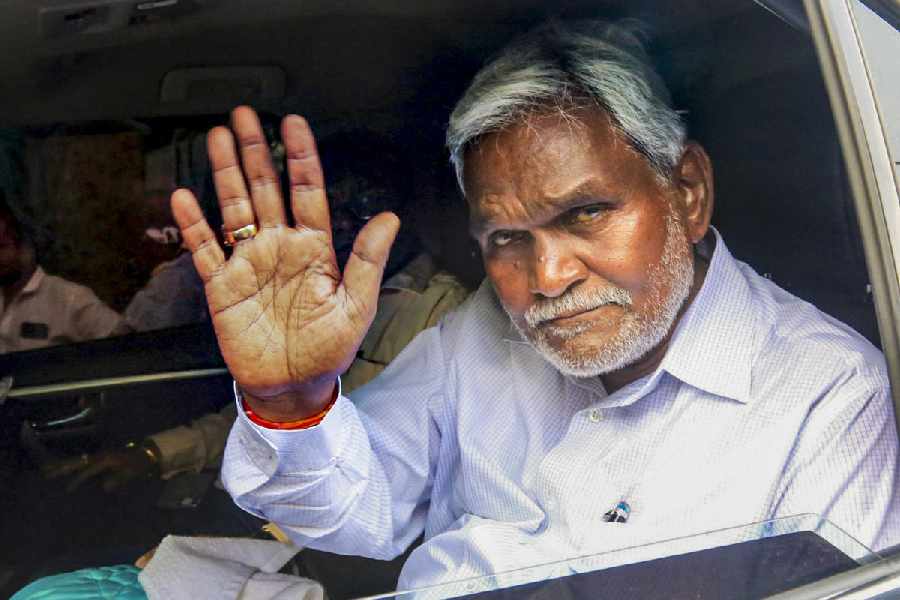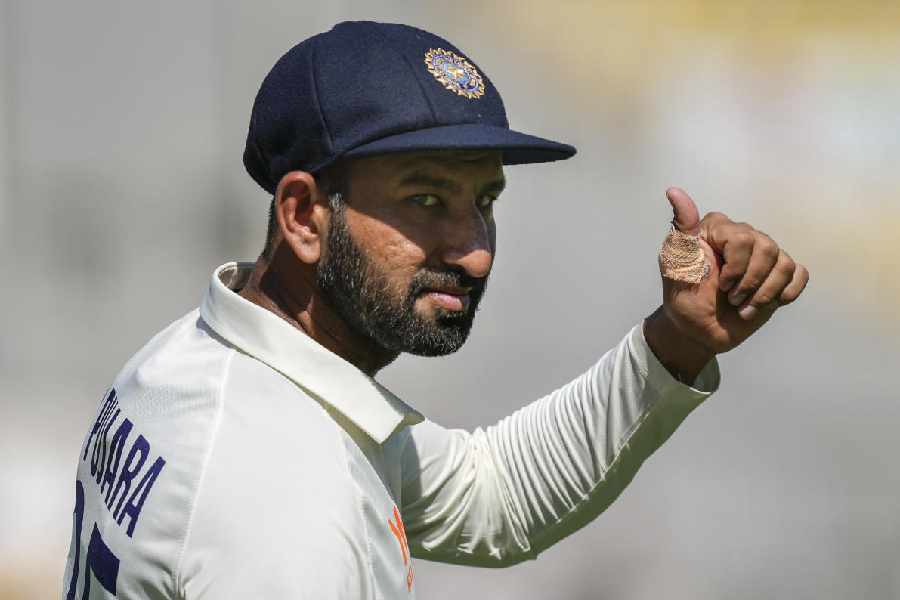 |
| Kochur loti Chhola diye |
Once, a friend recalls, she took a group of young colleagues to a small Bengali speciality restaurant in Calcutta. A few people in the party were vegetarians, so she asked the cooks if they had vegetable dishes to go with all the fish and meat delicacies that they had ordered. Oh yes, the cooks replied, lots and lots.
The food came to the table — and among them were the so-called vegetable dishes that had been promised. Sure, there was a dish cooked with bottle gourd, another of lentils and the third with green cabbage leaves. The only problem was that the first also included liberal quantities of small shrimps, the second was flavoured with bits of meat and the third had the head of a fish (to say nothing of its eye) staring balefully at the vegetable eaters.
People who live outside the culinary world of the East would think that every vegetable dish has to have in it something that was once mobile. But despite the friend’s story — which never fails to make my vegetarian friends turn an interesting shade of green when I relate this at dinner tables — and the general belief about Bengali vegetarian food, there is actually a huge treasure of pure vegetarian dishes that the Bengali cuisine boasts of.
And at no time is this treasure more visible than before or during the Pujas. I am told that the topmost government dignitary in the country goes vegetarian for a month before and after the Pujas.
 |
| Khosha chochchori |
“There was a time when at least 80 per cent of the people ate pure vegetarian during the Pujas,” says chef Sumanta Chakrabarti, the corporate chef of the Ambuja group. “Now their numbers may be on the decline, but vegetarian food during this season is still very popular and spans a huge spectrum,” he says.
We were discussing food at Sonar Tori — the new restaurant at Ganga Kutir, which is one of the most beautiful places that I have ever seen. The Raichak hotel’s restaurant serves various kinds of vegetarian dishes (apart from its non-vegetarian fare) as part of the three main rural sub-cuisines of the region. The menu consists of elaborate zamindari food, the simple but delicious peasant food and the many layered Muslim food. The topic moved on to vegetarian dishes that are eaten during the Pujas — and what’s specially cooked during the festival.
“A lot of saags, for instance, are available during this season,” the chef says. So, you’ll have a host of dishes such as chaal bata diye paat saag bhaja (jute greens cooked with powdered rice) and kochur loti chhola diye (colocasia stems with Bengal gram).
 |
| Chaal bata diye paat saag bhaja |
Of course, no Puja meal is complete without something like labra or chochchori. Chef Chiranjib Chatterji, who was earlier with Afraa and is now the executive chef of a new group called Pipal Tree Hotels, stresses that labras and chochchoris herald the end of summer, and the advent of a new crop of fresh and juicy vegetables. The two dishes are mixed vegetables that raise a toast to all that is there to eat in the vegetable world — drumsticks, white and red pumpkins, bottle gourd, broad beans, brinjal, radish and so on.
The preparations, he points out, are spicy. “The khichuri in the bhog is mild — flavoured mostly with ghee — and so the spicy chochchoris and labras go well with it,” he says.
And the chochchoris are not just cooked with vegetables, but often with just the skins too. Chef Sumanta, for instance, does a delicious mix called khosha chochchori — cooked with the skins of potato, ridge gourd, brinjal, sweet potato, wax gourd, red pumpkin and bottle gourd.
The festive season also welcomes the first cauliflower. And though the vegetable is now available through the year, I still think it tastes so much better when there’s a mild chill in the air. Chef Sumanta cooks something called phulkopir roast, which, despite its name, is a traditional dish of onions and cauliflowers. For this, you slice onions and make a paste of ginger and green chillies. Sauté half the onions. Then place washed and cut cauliflower florets on top of the onions. Place the remaining sliced onions over the cauliflower. Add sugar, salt and the ginger-chilli paste. Add a bit of water and cover. Once it is done, top with the juice of a Gondhoraj lebu before serving.
Clearly, there’s more to Puja food than just meat and fish. Vegetables can make your Pujas special too. And with piping hot bhog khichuri — laced with ghee — the veggies just can’t go wrong.
 |
Chhaana Narkol Paturi (serves 1)
Ingredients:
120g chhaana or chhaina • 50g grated coconut • 2 tsp ginger paste • 1 tsp garlic paste • ½ tsp green chilli paste • 2 tsp mustard paste • 1 pinch black cumin seed powder • 1 tbs khoya • 1 green chilli slitsalt to taste • ½ tsp sugar • 1 banana leaf • 2 tsp mustard oil
Method:
Knead the chhaina with the wrist till it’s smooth. Add the grated coconut, ginger paste, garlic paste, green chilli paste, mustard paste and khoya. Mix well. Crackle the black cumin seeds in a bit of hot oil. Sprinkle this on top of the chhaina mix. Put the mix on a banana leaf. Add the slit green chilli on top and drops of mustard oil and then seal the banana leaf. Steam for 4-5 minutes. Serve, with aromatic pulao.










